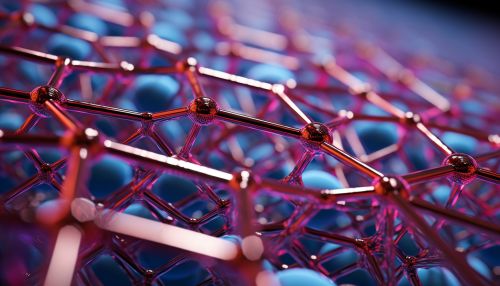The Physics of Quantum Mechanics in Nanotechnology
Introduction
Quantum mechanics, the branch of physics that deals with phenomena on a very small scale, such as molecules, atoms, and subatomic particles, plays a crucial role in the field of nanotechnology. Nanotechnology involves the manipulation of matter on an atomic, molecular, and supramolecular scale, and it is here that the principles of quantum mechanics become particularly relevant.


Quantum Mechanics and Nanotechnology
Quantum mechanics provides the theoretical apparatus for understanding, explaining and predicting the behavior of particles at the nanoscale. The principles of quantum mechanics are fundamental to nanotechnology, as they provide the basis for understanding the behavior of particles at this scale and for predicting new phenomena.
The principles of quantum mechanics that are particularly relevant to nanotechnology include quantum confinement, quantum tunneling, and quantum superposition. These principles all arise from the wave-like nature of particles at the nanoscale, which is a central feature of quantum mechanics.


Quantum Confinement
Quantum confinement refers to the effect that occurs when a particle is confined to a very small space. This confinement can lead to discrete, quantized energy levels, which is a distinct feature of quantum systems. In nanotechnology, this effect can be observed in quantum dots, nanowires, and other nanostructures, and it is crucial for the development of quantum computing and quantum information technologies.
Quantum Tunneling
Quantum tunneling is another quantum phenomenon that is crucial in nanotechnology. It refers to the quantum mechanical phenomenon where a particle tunnels through a barrier that it could not classically pass. This effect is utilized in many nanotechnological devices, including tunnel junctions and certain types of transistors.


Quantum Superposition
Quantum superposition, the principle that a physical system—such as an electron—can exist in multiple states simultaneously, is another key principle of quantum mechanics that plays a significant role in nanotechnology. This principle is the basis for quantum computing, where quantum bits (qubits) can exist in multiple states at once, allowing for a vast increase in computing power over classical bits.
Applications of Quantum Mechanics in Nanotechnology
The principles of quantum mechanics are applied in many areas of nanotechnology, including in the design of new materials and devices at the nanoscale. These applications range from the development of quantum computers to the creation of new materials with unique properties.


Quantum Computing
One of the most promising applications of quantum mechanics in nanotechnology is in the field of quantum computing. Quantum computers use the principles of quantum mechanics to perform computations in ways that are not possible with classical computers. They use qubits, which can exist in multiple states at once due to quantum superposition, allowing them to perform many calculations simultaneously.
Nanomaterials
Quantum mechanics also plays a crucial role in the development of nanomaterials. These are materials that have been engineered at the nanoscale to have specific properties. The principles of quantum mechanics are used to predict and understand these properties, which can include everything from increased strength to improved conductivity to unique optical properties.


Conclusion
Quantum mechanics plays a crucial role in the field of nanotechnology, providing the theoretical framework for understanding and predicting the behavior of particles at the nanoscale. Its principles are fundamental to the design and function of many nanotechnological devices and materials, from quantum computers to nanomaterials with unique properties. As our understanding of quantum mechanics continues to deepen, so too will its applications in the field of nanotechnology.
